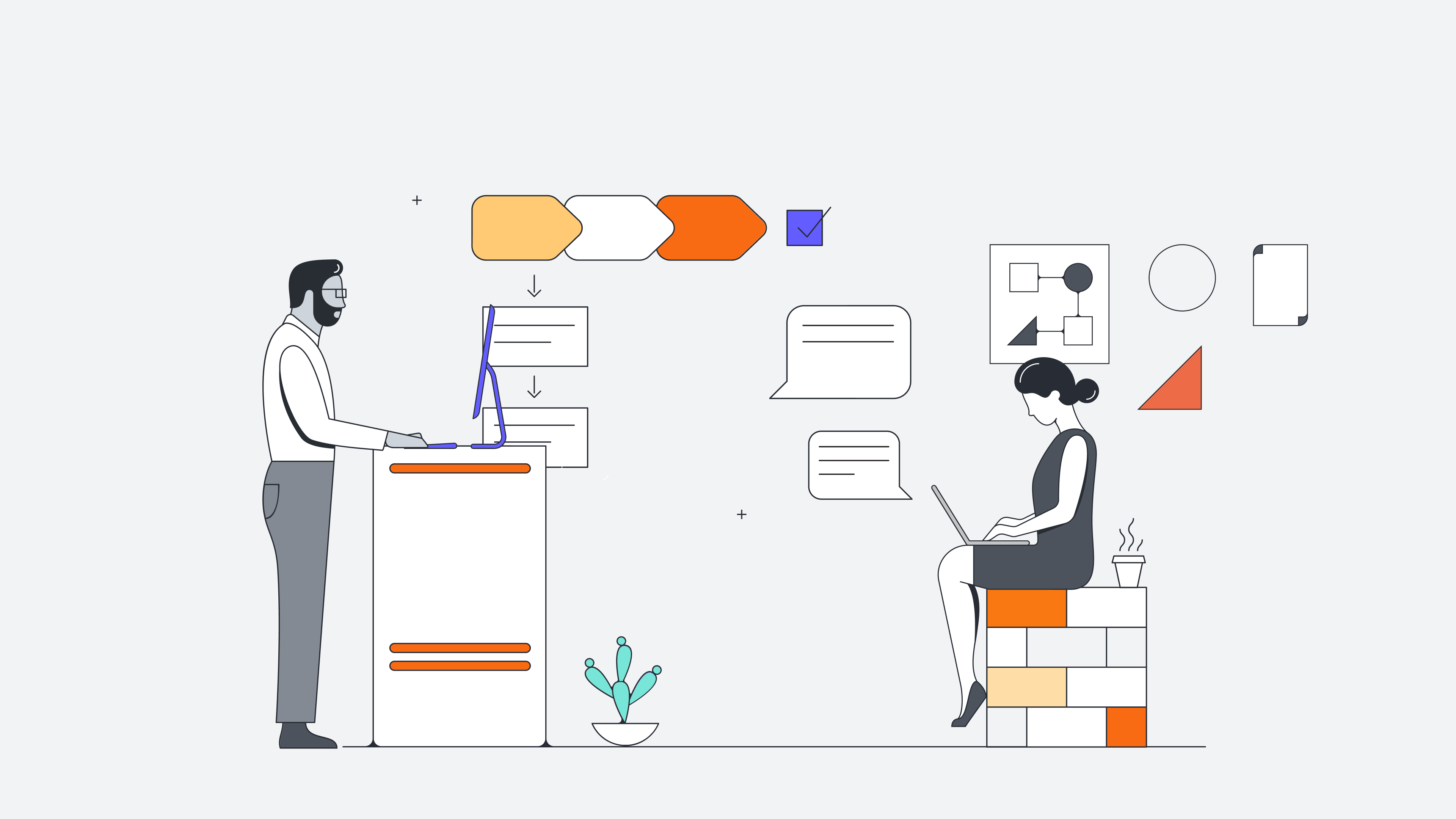
Scrum board vs Kanban board: Choosing the right Agile tool
Reading time: about 9 min
If you are accustomed to working in an Agile production environment, you are probably familiar with terms such as “Scrum” and “Kanban.” Scrum boards and Kanban boards are similar in that they both are used as visual representations to track the progress of specified tasks—and either one can help your development team build and release quality products faster.
Not sure which to start using? In this article, we will explain what a Scrum board is and how to use it and then review the differences between Scrum boards and Kanban boards.
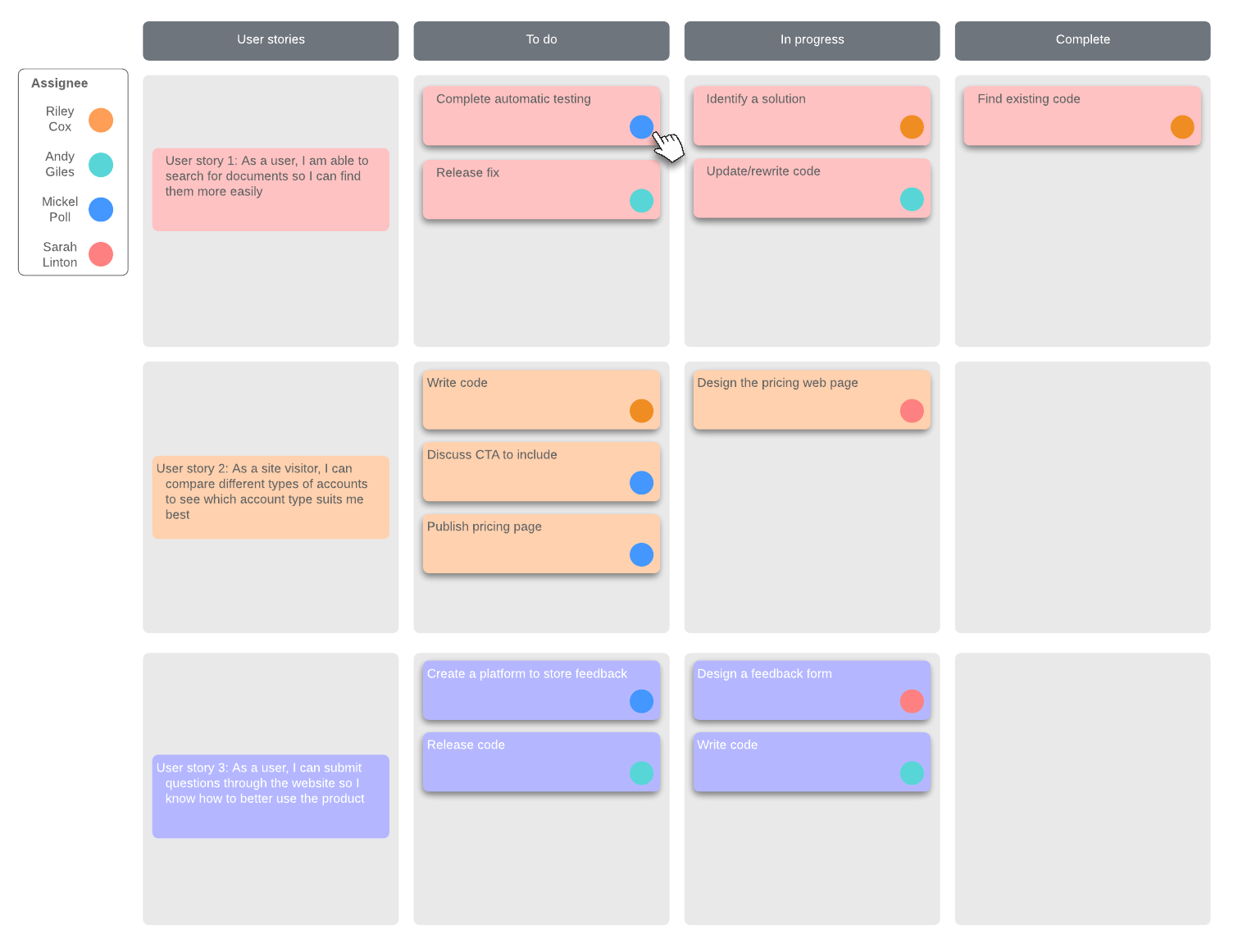
What does scrum mean?
In rugby, the term “scrum” refers to a method of restarting play where teams interlock arms, lower their heads, and push against the other team in order to gain possession of the ball. The idea of a scrum is teamwork. All players are interlocked and move together as a team toward the same goal. No individual player stands alone.
In an Agile production environment, the term “Scrum” also implies teamwork. Scrum is a method of applying Agile where a team comes together to discuss and evaluate what is working and what is not working. It is based on the adaptive and iterative methodology of development.

Learn more about Scrum and other Agile frameworks, including Kanban, in our in-depth guide.
Read moreWhat is a Scrum board?
A Scrum board is used to track work in short, incremental sprints. Before the sprint is completed, your goal is to move all of the tasks to the "Done" column. There is no set format for setting up a Scrum board. It is left to the team to decide how to present the information that is needed.
Typically, the board is divided into horizontal lanes or vertical columns that the team use to track the progress of the agreed-upon work to be completed in the sprint. A scrum board may include these columns:
- To Do: The prioritized backlog of product features planned for the current sprint
- In Progress: The list of tasks that have been started
- In Test: Completed tasks that are being tested for verification
- Done: Tasks that have been completed and verified by testing
You can add or remove lanes and columns to suit your needs.

Why use a Scrum board?
A couple of important principles of Scrum are teamwork and transparency. All members of the team need to be aware of the work being done, the team members completing the work, the progress of that work, and team accomplishments.
A Scrum board facilitates these principles in the following ways:
- Promotes team interaction and discussion: Team members and stakeholders look at the board throughout the day to discuss progress and to prioritize work.
- Makes information visual and easily accessible: Whether your board is physical or virtual, the information it displays is easy to digest and easy to access. Anybody looking at the board can quickly assess where the team is in the iteration and what still needs to be done to achieve goals.
- Supports full team commitment: When the team sees all the tasks on the board, it keeps them from focusing only on individual tasks. As individual tasks are completed, those with the time step up and take on additional tasks.
Scrum boards are designed to complete specific user stories and tasks within a specific time frame. You’ll want to use a Scrum board if your team develops based on iterations or sprints.
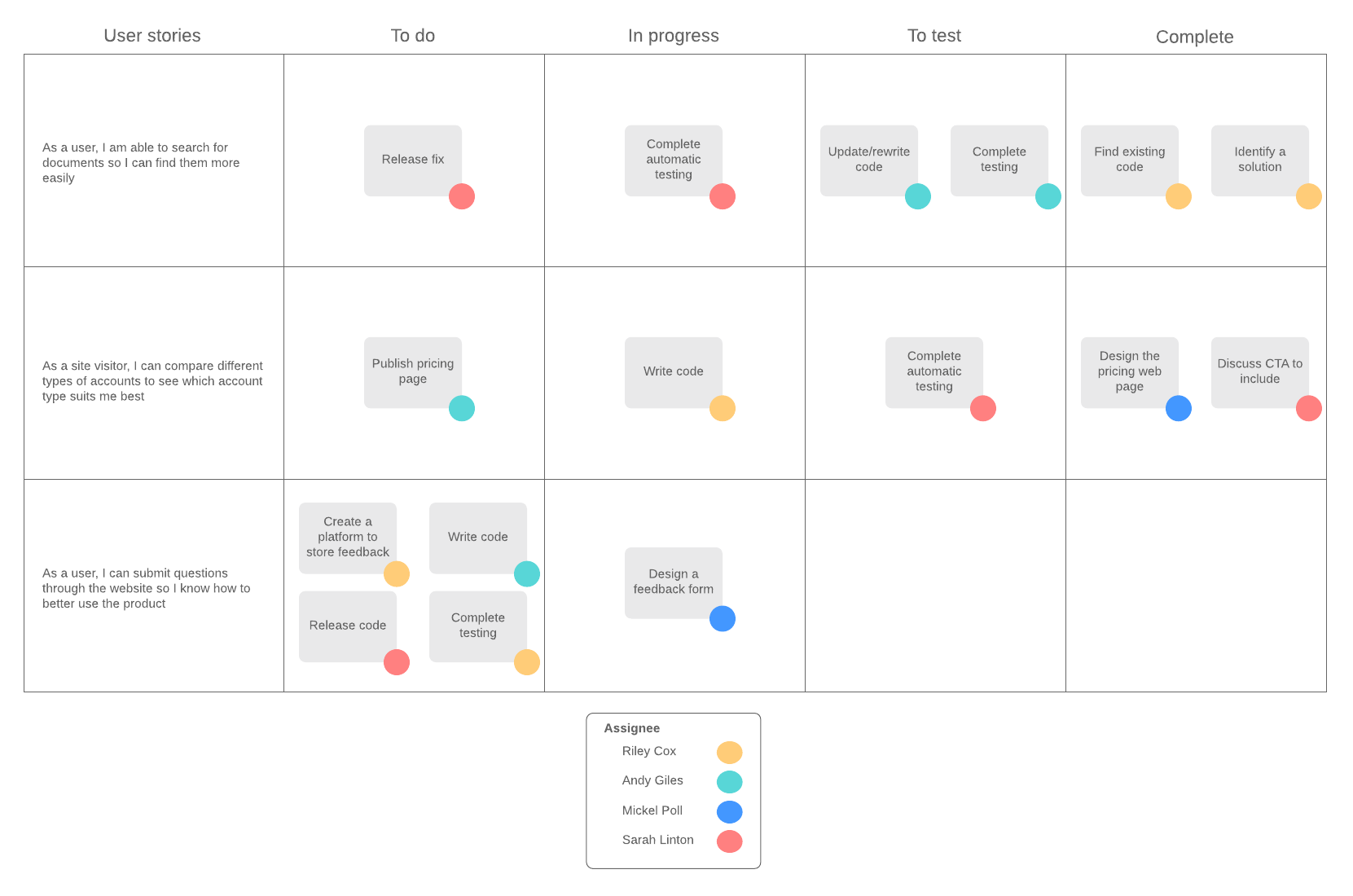
How do you use a Scrum task board?
The Scrum board is a daily reminder of the sprint goal and the tasks that the team has committed to complete. It is a visual tool to organize tasks and track progress.
A daily standup meeting is held where team members look at the board so that tasks can be moved from one column to the next as progress is reported. This is a great way to help the team stay focused on the goal and to understand who is doing what.
Using a Scrum board can be as simple as 1, 2, 3.
- Assign tasks from the To Do column to members of the team. As tasks are assigned, move them to the In Progress column. If the tasks are sub-tasks of a larger user story, the story remains in the To Do column until all tasks are completed.
- When team members report that tasks in the To Do column are completed, move them to the In Test column.
- If the task passes in testing, it is moved to Done. If all of the sub-tasks of a user story are moved to the Done column, the story is moved to Done as well. If the task does not pass the test, it is moved back to In Progress for revision.
The work that is tracked on a scrum board is limited to the number of tasks that the team has committed to complete in the current iteration. New items cannot be added to the To Do list until all the work makes it to the Done column. There is nothing that prevents you from having all of the tasks in the In Progress column at the same time.
Now, as an alternate tool for tracking progress, let’s consider the Kanban board.
What does kanban mean?
In Japanese, the word “kanban” means sign or billboard. It is a visual signal that’s used to trigger an action (e.g., an empty store shelf signals that merchandise needs to be restocked).
When adapted for Agile development, Kanban is a method for developing products with an emphasis on just-in-time delivery and the optimization of the flow of work on the team. When current work in progress is completed, developers pull new work from a queue.
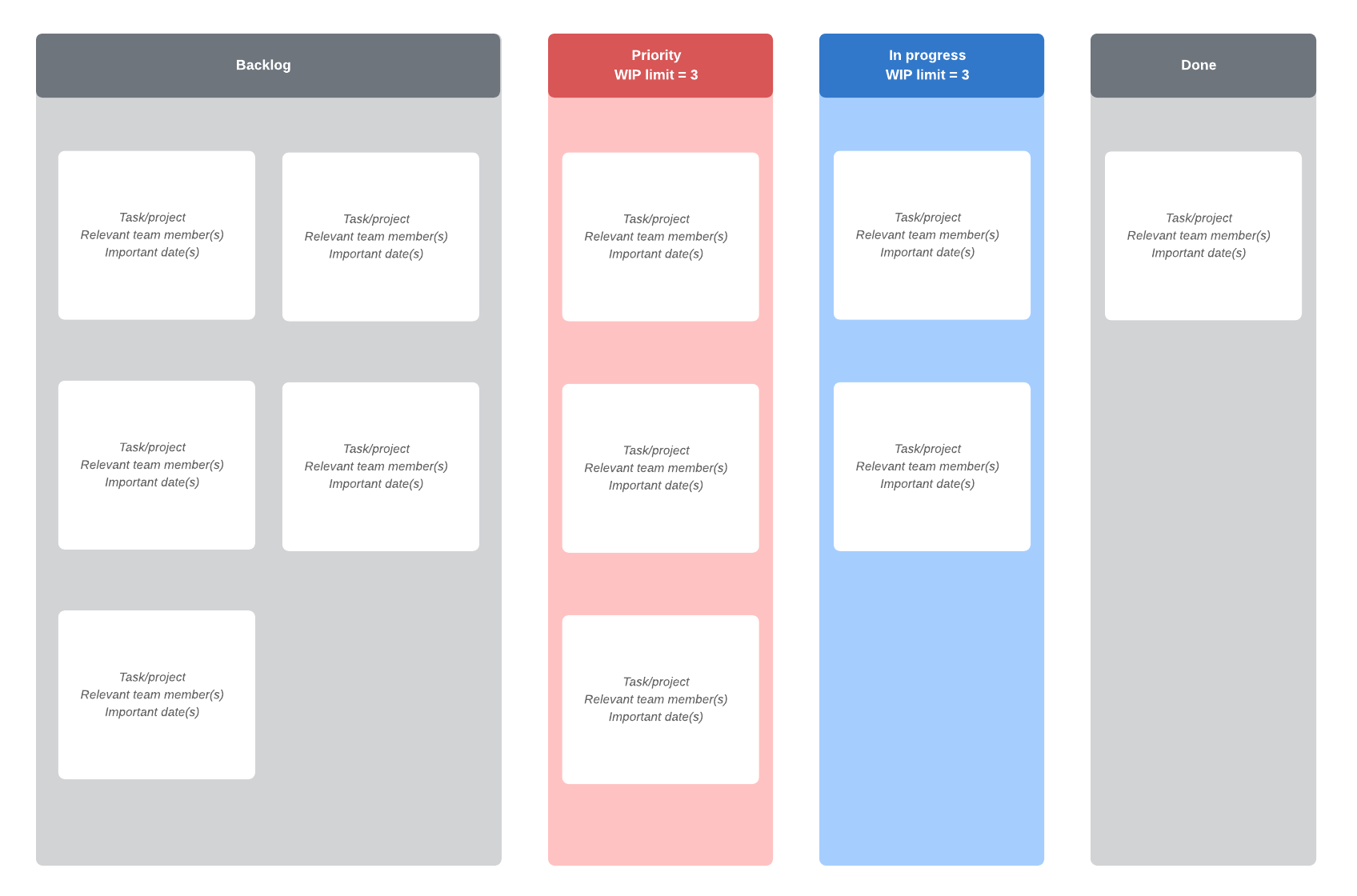
What is an Agile Kanban board?
A Kanban board includes columns to visualize and track work. This Agile board uses cards, columns, and just-in-time continuous improvement to help development teams commit to the right amount of work and get it done.
A Kanban board tracks the process flow while limiting the number of in-progress tasks and maximizing the workflow. The number of tasks that are in progress should be big enough to keep all team members engaged to minimize idle time, but small enough to ensure that “busy work” is not thrown in.
Why use a Kanban board?
A Kanban board workflow typically includes these three categories:
- Queue: Work that needs to be done
- In Progress: Work that has been retrieved from the queue and is currently being worked on
- Done: Work that has been completed
Each category limits the number of work items that are assigned to it. For example, if the team determines that no more than six work items can be in the In Progress column at any given time, new work cannot be pulled from the Queue until current work is completed. As the queue is depleted, new tasks can be added to it. This process keeps the work flowing smoothly, ensures that no work is overlooked, and keeps all team members engaged.
In addition, you can customize the Kanban board to include any categories and columns that you want. For example, you may want to add a column for testing the work before it is considered completed.
However you decide to set up your board, the workflow process is the same:
- Place work that needs to be done in a Queue.
- Pull work items from the Queue and move them to the In Progress column.
- Move completed work to the Done column.
- Add new work to the Queue as needed.

Kanban vs Scrum board
When comparing a Scrum board vs Kanban board, the differences may not be immediately obvious. Both boards are used to visually track work that needs to be done, is in progress, and has been completed. These Agile boards help keep the team engaged and focused on the goal.
However, Scrum boards follow a very specific, rigid methodology, while Kanban boards are much more fluid and can be more easily adapted. Take a look at a few major differences between the two boards.
Timing
Scrum: In Scrum methodology, teams prioritize work and commit to a certain number of tasks within a sprint, or two-week period. Work is released at the end of each sprint.
Kanban: Kanban is not limited to an iteration or sprint—it’s more likely to support continuous delivery. Teams continue working on tasks as they come in.
Roles
Scrum: Scrum roles include the product owner, Scrum master, and development team.
Kanban: Agile Kanban boards have no set roles.
Work in progress
Scrum: Tasks cannot be added to the scrum board in the middle of the sprint, but it is possible for all tasks to be in the In Progress column at the same time.
Kanban: The team agrees on the amount of work that needs to be done and the amount of tasks that can be in progress at the same time. As tasks are completed, team members pull new tasks from a queue.
Philosophy toward change
Scrum: Work is not added during the two-week sprint. Although the whole team should have access to the Scrum board, only the product owner can edit it during the sprint.
Kanban: Agile Kanban boards are flexible and can be changed at any point.
Reports
Scrum: Scrum teams can review performance, with velocity as their primary metric, using sprint burndown charts and a number of other reports.
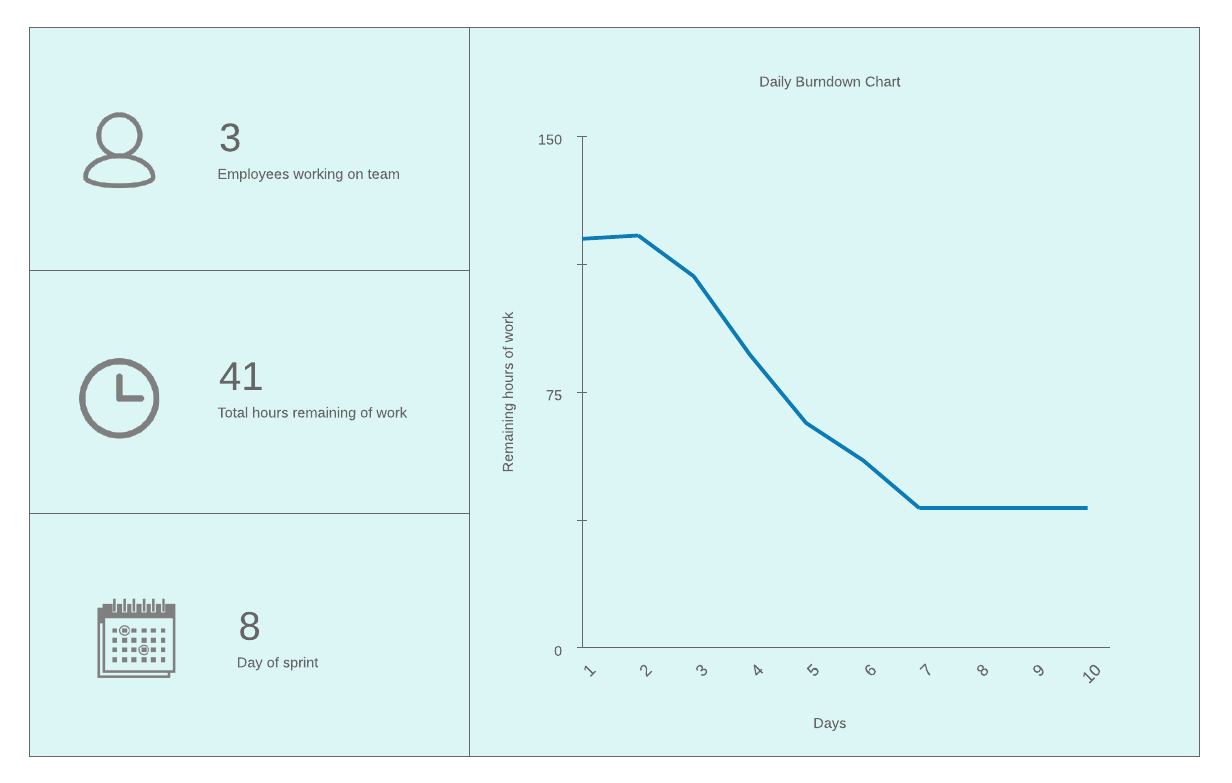
Kanban: There is not a specific report prescribed for the kanban methodology, but a cumulative flow diagram is recommended.
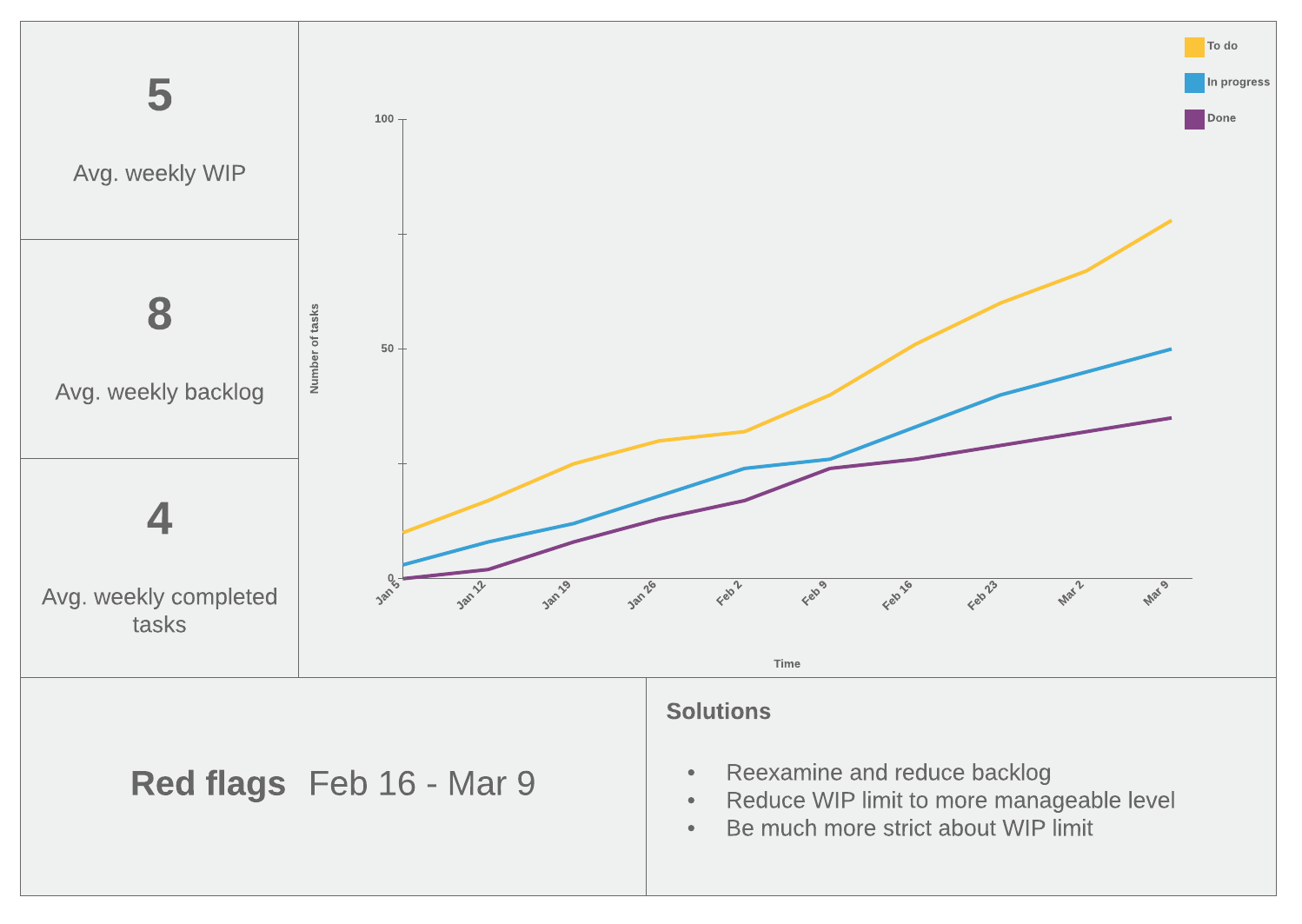
Retrospective
Scrum: At the end of the sprint, teams hold a sprint retrospective to discuss what went well and how they can improve.

Kanban: Because Agile Kanban boards do not have a set ending period, there is not a retrospective meeting associated with this methodology.
Physical board vs virtual board
Some teams prefer using a physical board, such as a whiteboard or a glass wall, when working with Scrum tasks and Kanban boards. Physical boards work well only if your entire team is all in the same location and are available for the majority of sprint meetings.
Virtual boards are more flexible because team members can access them from any location, even if you have remote workers on your team. With platforms like Lucidchart, you can make updates to your Kanban or Scrum board in real time so everyone always has access to the latest information and updates.
How can Lucidchart help?
You will need to work with your team and all project stakeholders to determine whether a Scrum task board or a Kanban board is best for you. Whatever you decide, use Lucidchart to create the perfect web-based board. Lucidchart offers Kanban and Scrum templates to help you build out your board quickly.
In addition to collaborating in real time, Lucidchart users can integrate with popular business apps, such as Confluence, Jira, GitHub, and Microsoft Teams. Incorporate your Agile tools whenever you work.
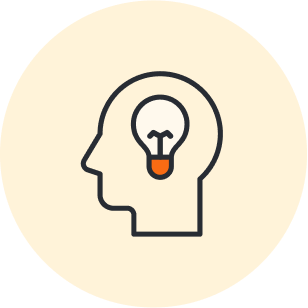
Hey project managers: Lucid has got you covered.
Learn howAbout Lucidchart
Lucidchart, a cloud-based intelligent diagramming application, is a core component of Lucid Software's Visual Collaboration Suite. This intuitive, cloud-based solution empowers teams to collaborate in real-time to build flowcharts, mockups, UML diagrams, customer journey maps, and more. Lucidchart propels teams forward to build the future faster. Lucid is proud to serve top businesses around the world, including customers such as Google, GE, and NBC Universal, and 99% of the Fortune 500. Lucid partners with industry leaders, including Google, Atlassian, and Microsoft. Since its founding, Lucid has received numerous awards for its products, business, and workplace culture. For more information, visit lucidchart.com.
Related articles
How to nail your Agile communication plan
We’ll cover what makes Agile communication plans different and what best practices you can follow for creating an Agile communication plan that works for your team.
3 key disadvantages of Agile methodology (and how to avoid them)
There are many benefits that Agile methodology provides in project management—but there can be downsides as well. Learn about common challenges of Agile and solutions to overcome them.
How Kanban Methodology Can Improve Your Team
Learn how you can use the Kanban project management methodology to reduce waste and increase efficiency in your workflow.
Agile vs. Waterfall vs. Kanban vs. Scrum: What’s the Difference?
Check out our complete guide to help you understand the different project management methodologies. Understand what really sets Waterfall, Agile, Scrum, and Kanban apart and determine which is the best fit for your team.
